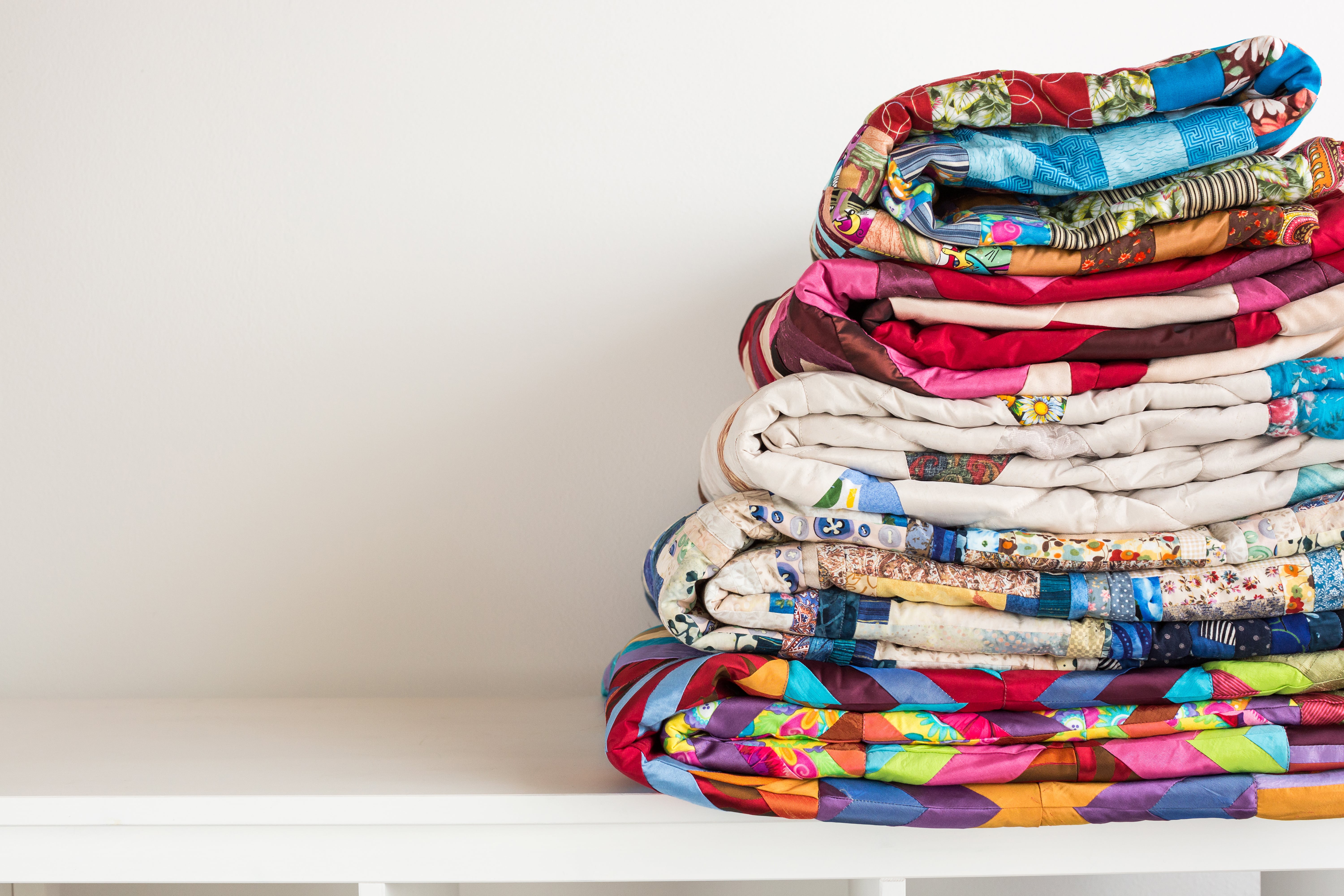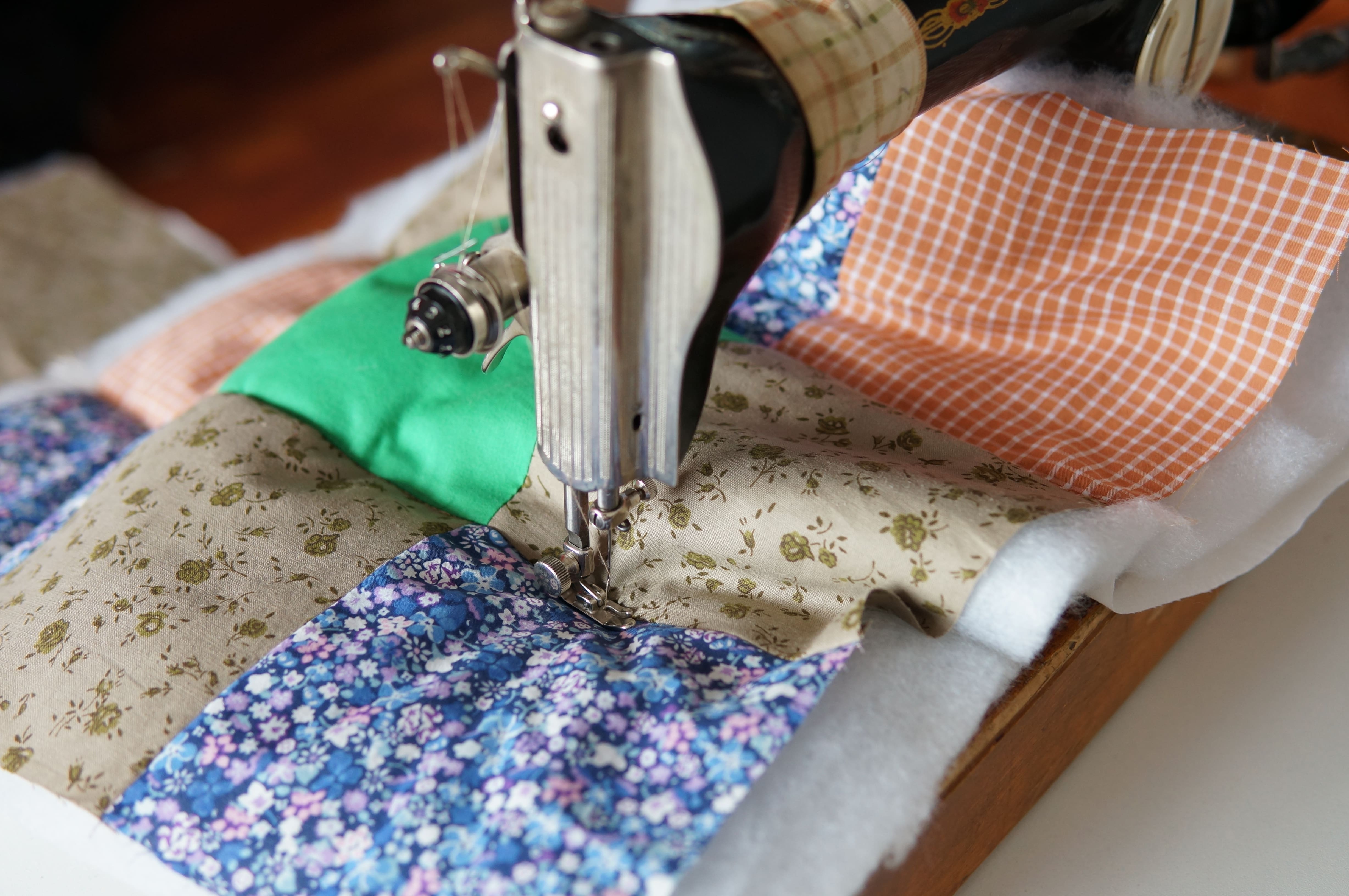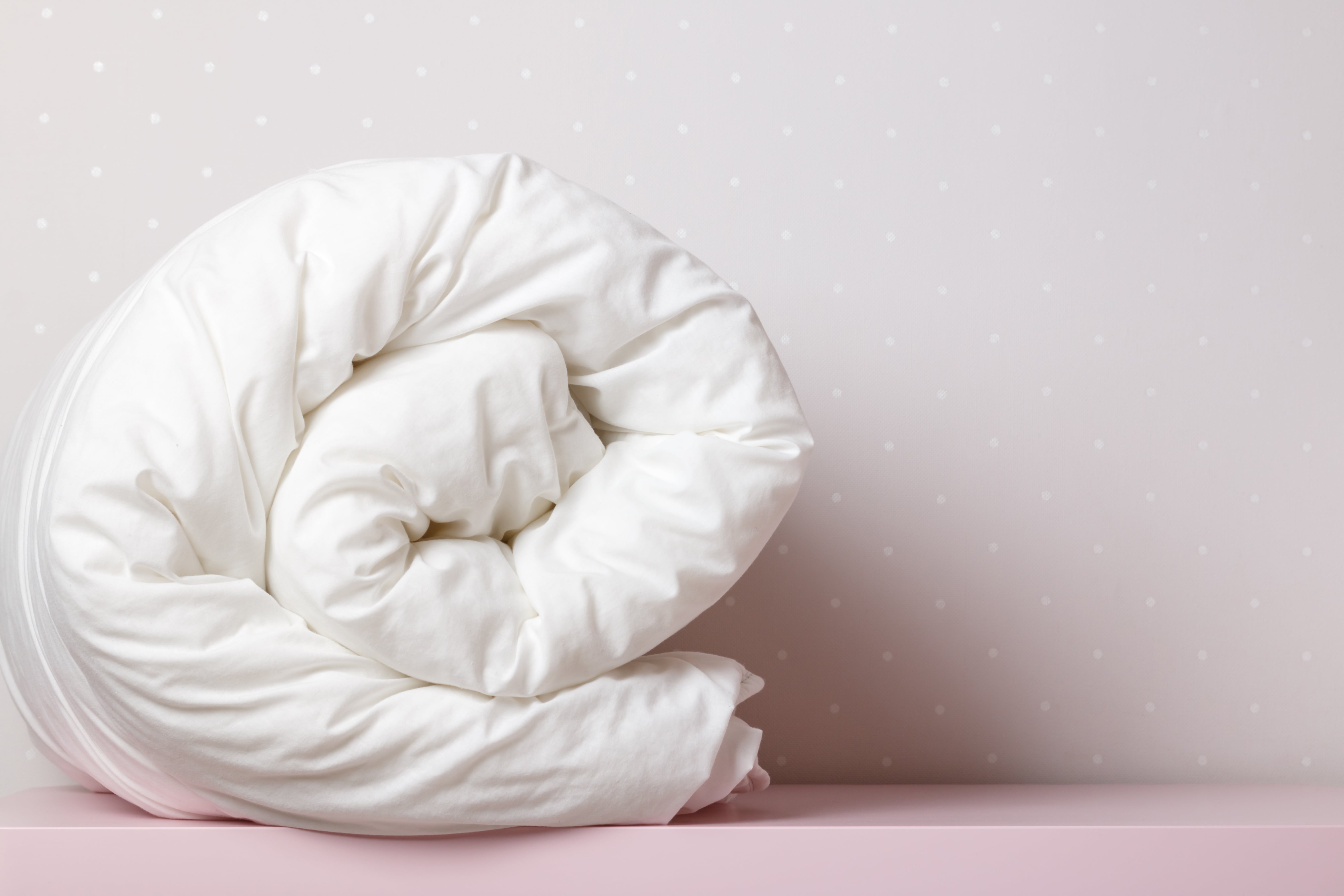Posted by Emma Carlton - Buying and Merchandising Manager on 20th Sep 2022
Quilts Around the World
Is there anything more soothing than swaddling yourself in a cosy coverlet when you’re feeling under the weather or down in the dumps? From patchwork family heirlooms to beautifully decorative bed throws picked up on your travels, quilts hold a special place in our hearts. The precursors to our modern duvets and duvet covers, quilts have long connected us to people and places while also helping us to keep warm and feel cared for.
Whether you’re a committed king size duvet snuggler or a sheets and blanket traditionalist, when it comes to your bedding, chances are you’ve got a quilt somewhere at home too. Maybe it takes pride of place draped over your living room sofa, or perhaps it’s lovingly stored away in a blanket box for safe-keeping. However you use your coverlet, your quilt is part of a long, worldwide tradition dating back hundreds of years.
So where did quilts come from? What do they signify? And how do quilts continue to help us build a sense of community and care for others? You know we can’t resist a deep dive into all things cosy, so let’s take a time-traveling tour around the world of quilts from the comfort of our pillow fort…
The history of quilts

Quilting is an ancient art dating back to medieval times, with evidence of quilting techniques having been used even earlier – we’re talking Cleopatra and co. The practice of stitching together two layers of material, filled with wadding is known to have existed in the 13 th century. Indeed this is the first time the word ‘quilt’, derived from the Latin ‘culcita’ (pillow or stuffed sack) appears to have been used.
Types of quilt
Experts in quilt-making point to there being three different types of basic quilt:
- The whole-cloth quilt: this is a simple sandwich of two complete cloth layers packed with padding.
- The applique quilt: applique is the act of sewing smaller pieces of fabric onto a large base. Applique quilts are therefore much like whole-cloth quilts but with additional decoration sewn on for personalised pizzazz
- The patchwork quilt: also known as a pieced quilt, this is made up of small pieces of fabric stitched together to form a colourful whole. Often patchwork quilts are made using paper templates with individual fabric pieces sewn to shape and stitched together
Within these three basic quilt styles, there’s a staggering array of quilt types that reflect the region and the time in which they were made. In the Netherlands, you might come across a classic patchwork Dutch quilt. Meanwhile in China, you’ll find highly personal baijia bei, or ‘100 good wishes quilts’, each made with fabric contributions from 100 family members and friends.
Early quilts
Mentioned in medieval texts and passed down through the generations, quilts are displayed in museums around the globe.
One of the earliest examples available to our curious eyes is the Tristan quilt, on show at London’s V&A. Depicting the medieval legend of Tristan and Isolde, complete with castles, ships and men who may or may not be donning micro-mini skirts, this quilt was made in mid to late 14 th century Sicily. It’s one of the very oldest examples of ‘trapunto’ or stuffed quilting and its construction isn’t all that different from the quilts Auntie Jean whips up on her Janome.
However, those quilt boffins out there think that folk may have been using quilting techniques long before the days of the Tristan quilt.
Quilting for clothes and homes
Among the oldest quilted items ever found is a Mongolian linen carpet or floor covering thought to date back to the first century AD. Not old enough for you? How about the clothing worn by a carved ivory figure from the first Egyptian dynasty of 3400BC. Now that’s ancient stitchwork.
You see, warm and practical, quilting isn’t just great for bedding. It’s also long been used in decorative items and clothing. First used by the Crusaders for warmth underneath chilly chainmail, men in 17 th century Britain revived the trend for quilted garb with fetchingly decorative doublets and breeches. Meanwhile, quilted clothing has long been beloved in India, with quilted hunting coats dating back to the 17 th century Mughal dynasty on display in museums, including the V&A.

Who invented the quilt?
So who lays claim to inventing the quilt? Well, it’s pretty impossible to know, given that they’ve been used throughout the world from time immemorial. What we do know, however, is that quilts continue to be an important part of life in communities everywhere, from Canada to the Cook Islands (home to the Tivaevae quilting tradition).
Quilts in Europe
Beyond the UK, where Henry VII’s household inventory recorded ‘coverpointes’ and ‘quyltes’ [i] and where Durham quilts, or North Country quilts, were pioneered during the Industrial Revolution, Europe has a strong connection to quilt-making.
France is particularly known for its Provencal quilts, Marseille counterpanes or French boutis (that’s the Provencal word for stuffing etymology fans!). These traditional bed covers are still made and used to this day with similar versions found in other Southern European countries.
Quilts in America
The European tradition of quilting was almost certainly carried to North America with the pilgrims. Now one of the most famous homes of quilts that tell a tale, the USA has borrowed traditions from Native American and African communities to grow a quilting tradition all of its own.
From the star quilts of the Plains tribes to the Seminole patchwork originated by Native Americans of Southern Florida, American quiltmakers have developed a unique style based on homespun traditions. They’ve also taken inspiration from African civilizations and European quilting traditions to develop pictorial quilts, which aren’t just family heirlooms but also valuable historic artefacts.
Quilts in Asia
From Bangladeshi kantha quilts made of old, worn saris, to the indigo-dyed fishermen’s shashiko of Japan, quilting has a long, enduring history throughout Asia.
Perhaps most famous of all are the colourful ralli of Pakistan and Western India. Made by women in rural areas, ralli are created using scraps of hand-dyed fabric. These ralli (the word derives from ‘ralanna’ meaning connect or mix) are used to cover sleeping cots, or charpoys. Passed down through families, they will often form part of a woman’s dowry when she marries.
Quilts in Africa
With one of the richest tribal histories on Earth, it’s little surprise that Africa has a patchwork of quilting history all of its own; from the famed khayamiya of Egypt to South African where a biannual quilt festival takes place.
While in the vast majority of locations women take on the task of quilt making, in many African nations it has long been men who traditionally carry out textile work. In fact, the tradition of quilt-making among African American women is rooted in the forced reassignment of gender roles during slavery.
Quilts in South America
No summary of quilting is complete without a mention of the mola. Created by the Kuna people of Colombia and Panama, mola quilting is constructed similarly to European and American quilts, however these pieces aren’t destined for bedding. Instead, the colourful reverse-appliqued patterns, animals and birds are used in the yokes of blouses traditionally worn by Kuna women.
Coverlets and community

Throughout history quilts have brought communities together. They’ve commemorated weddings and births, brought people together and acted as messages of hope to loved ones.
Story quilts
Every quilt has a story to tell. Often that story is in the fabric used, but sometimes the story is more literal.
During the American Civil War, for example, women stitched quilts for soldiers. Often fabric scraps were arranged into a flag design and many quilts incorporated inked messages or poems, a reminder of those waiting at home.
And just like the Tristan quilt, some counterpanes tell an intricate, linear story. Many Industrial Revolution quilts depict biblical scenes and scripture or even tell of events that took place at the time.
Military quilts
Civil War wives weren’t the only ones to realise the value of quilts to those faced with war.
In the 19 th century, quilt-making became a popular pastime amongst British soldiers posted overseas. Making quilts from the wool serge and cotton of old uniforms was encouraged as a wholesome alternative to drinking and gambling. It was also seen as an effective form of therapy for those injured in battle.
During both World Wars, soldiers continued to be encouraged to engage in quilting through initiatives such as the Bradford Khaki Handicrafts Club [ii].
Quilts and social change
In the 1800s, British prison reformer Elizabeth Fry encouraged the teaching of patchwork to female prison inmates.
Fry’s work was commemorated in the Rajah Quilt, stitched by inmates on board the Rajah, bound from London to Tasmania at a time when transportation was a punishment second only to execution.
Made in horrendous conditions, the nonetheless beautiful quilt included a tribute to the kindness shown by Fry and her colleagues, who taught inmates simple domestic skills and supplied them with sewing tools.
The charity Fine Cell Work continues this tradition, selling high-quality needlework items made by inmates, who learn valuable skills and earn money while improving their self-worth.
Art and social commentary
Quilt-making continues to tell stories, and several artists, including Tracy Emin and Michele Walker, have explored quilting as an art form.
Choosing quilting to connect with African American traditions, artist Faith Ringgold collaborated with her mother and grandmother, a one-time slave, to create powerful works touching on feminism, stereotypes and, in her French Collection series, the African American women who dedicated their lives to changing the world.
Raising money through quilting
To this day, quilt-making charities recognise the power of the quilt, encouraging talented sewists to contribute their efforts to help others. Among these charities are Project Linus, which makes quilts for ill and traumatised children, and the Snuggles Project, producing quilts for nervous animals in adoption shelters. Quilts for Care Leavers, meanwhile, aims to provide a quilt for every young person leaving social care.
In Pakistan, meanwhile, women displaced to refugee camps after the 2010 floods made ralli, normally reserved for the family, to sell, raising money to help families return to their villages.
Quilts at home

These days most of us keep decorative and heirloom quilts for display and choose instead to sleep under the modern equivalent – a duvet.
Originally referred to as a continental quilt, the duvet has gained in popularity since the 1970s. Replacing our grandparents’ multi-layered sheets and blankets, making the morning task of making your bed that much easier (seriously, who has time for all those hospital corners?!), the duvet is based on the traditional quilt but is softer and thicker and without the decorative value - although there are more than enough fabulous duvet covers out there for that!
Choosing your duvet
When choosing a duvet for your bed there’s plenty to consider:
- How heavy does your duvet need to be?
- What size is right for you?
- Which filling do you prefer?
- Do you need any special features?
The right duvet tog
From a light as a feather 4.5 tog to a heavy duty 13.5, there’s a duvet for every season. Many people choose to invest in two duvets – a lighter weight summer duvet and something heavier for cold nights.
Increasingly popular are 3-in-1 duvets, some of which give you two duvets (one light, one medium tog) which clip together for maximum tog warmth when the temperature plummets.
Duvet size matters
The duvet size you require isn’t just down to the size of your bed. Perhaps you have a standard double bed but one of you is a duvet hog (and if you’re arguing over bedroom space perhaps we can help )? Maybe you just like to wrap up like a toasty burrito? There’s no reason not to upsize! Or why not make like a Scandinavian couple and choose a duvet each?
The right filling for your duvet
Duvet fillings are a matter of personal preference. Many people love down and feathers while others don’t like their heft or the potential for escaping quills.
Increasingly popular are natural fillings like wool, linen or silk, which though offering excellent temperature control can be pricey.
Those little bedding extras
Duvet and pillow technology has come on leaps and bounds in recent years, making it easier than ever to create your perfect nest.
Prone to allergies? Anti-allergy duvets prevent the build-up of the bed bugs and dust mites that can cause sniffles and skin rashes.
For your perfect quilt
We go to great lengths to help you find your bed, your way , from the ideal frame and perfect mattress , to the bedding that’s sure to keep you cosy. In fact, you could say that we do just about everything but sew you a personalised family quilt.
So whether you need a whole new bed delivered direct to your bedroom , really want to talk temperature control mattress topper or are just feeling a little bit confused by all the options when it comes to choosing your next duvet, our team of bed experts is ready and waiting to give you the helping hand you need. And not just in person! We also have more advice and tips than you can shake a feather pillow at here in our Sleep Hub.
With a wide range of bedding , including mattress protectors, pillows and, of course, those all-important duvets available both in our high street stores and right here on this very website, Bensons for Beds gives you all the options you’ll need to help you create your dream bedroom. All you’ll need to do is go forth and choose the softest cotton sheet and a duvet cover that reflects your personality. Oh, and maybe a patchwork quilt to finish the whole thing off, but Auntie Jean can probably help you with that.
To take advantage of our team’s in-depth slumbertime expertise, drop into your local Bensons for Beds store or give us a ring on 0808 144 6160 to order or for more information.
REFERENCES
[i] Inventory of Henry VIII - Society of Antiquaries of London (sal.org.uk)
[ii] Bradford Khaki Handicrafts Club (trc-leiden.nl)
SOURCES
V&A An Introduction To Quilting And Patchwork (vam.ac.uk)
What is a Mola? (thequiltshow.com)
Sewing for Charity - The Sewing Directory
Military Quilts (trc-leiden.nl)
Faith Ringgold Paintings, Bio, Ideas | TheArtStory
The Rajah Quilt - Age of Revolution
Project Linus UK | Project Linus UK is a volunteer organisation.
Q4CL – Quilts for Care Leavers
Black History and Quilting, a story - African American Registry (aaregistry.org)
Story Quilts - International Storytelling Center




